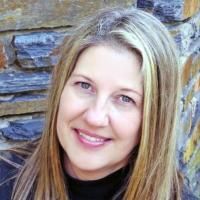Telomere disruption results in non-random formation of de novo dicentric chromosomes involving acrocentric human chromosomes.
Date
2010-08-12
Journal Title
Journal ISSN
Volume Title
Repository Usage Stats
views
downloads
Citation Stats
Abstract
Genome rearrangement often produces chromosomes with two centromeres (dicentrics) that are inherently unstable because of bridge formation and breakage during cell division. However, mammalian dicentrics, and particularly those in humans, can be quite stable, usually because one centromere is functionally silenced. Molecular mechanisms of centromere inactivation are poorly understood since there are few systems to experimentally create dicentric human chromosomes. Here, we describe a human cell culture model that enriches for de novo dicentrics. We demonstrate that transient disruption of human telomere structure non-randomly produces dicentric fusions involving acrocentric chromosomes. The induced dicentrics vary in structure near fusion breakpoints and like naturally-occurring dicentrics, exhibit various inter-centromeric distances. Many functional dicentrics persist for months after formation. Even those with distantly spaced centromeres remain functionally dicentric for 20 cell generations. Other dicentrics within the population reflect centromere inactivation. In some cases, centromere inactivation occurs by an apparently epigenetic mechanism. In other dicentrics, the size of the alpha-satellite DNA array associated with CENP-A is reduced compared to the same array before dicentric formation. Extra-chromosomal fragments that contained CENP-A often appear in the same cells as dicentrics. Some of these fragments are derived from the same alpha-satellite DNA array as inactivated centromeres. Our results indicate that dicentric human chromosomes undergo alternative fates after formation. Many retain two active centromeres and are stable through multiple cell divisions. Others undergo centromere inactivation. This event occurs within a broad temporal window and can involve deletion of chromatin that marks the locus as a site for CENP-A maintenance/replenishment.
Type
Department
Description
Provenance
Subjects
Citation
Permalink
Published Version (Please cite this version)
Publication Info
Stimpson, Kaitlin M, Ihn Young Song, Anna Jauch, Heidi Holtgreve-Grez, Karen E Hayden, Joanna M Bridger and Beth A Sullivan (2010). Telomere disruption results in non-random formation of de novo dicentric chromosomes involving acrocentric human chromosomes. PLoS Genet, 6(8). p. e1001061. 10.1371/journal.pgen.1001061 Retrieved from https://hdl.handle.net/10161/15131.
This is constructed from limited available data and may be imprecise. To cite this article, please review & use the official citation provided by the journal.
Collections
Scholars@Duke

Beth Ann Sullivan
Research in the Sullivan Lab is focused on chromosome organization, with a specific emphasis on the genomics and epigenetics of the chromosomal locus called the centromere. The centromere is a specialized chromosomal site involved in chromosome architecture and movement, and when defective, is linked to cancer, birth defects, and infertility. The lab has described a unique type of chromatin (CEN chromatin) that forms exclusively at the centromere by replacement of core histone H3 by the centromeric histone variant CENP-A. Their studies also explore the composition of CEN chromatin and its relationship to the underlying highly repetitive alpha satellite DNA at the centromere. The Sullivan lab also discovered that genomic variation within alpha satellite DNA affects where the centromere is built and how well it functions. The Sullivan lab was part of the Telomere-to-Telomere T2T Consortium that used ultra long read sequencing and optical mapping to completely assemble each human chromosome, including through millions of basepairs of alpha satellite DNA at each centromere. Dr. Sullivan's group also builds human artificial chromosomes (HACs), using them as tools to test components required for a viable, transmissible chromosome and to study centromeric transcription and chromosome stability. The lab also studies formation and fate of chromosome abnormalities associated with birth defects, reproductive abnormalities, and cancer. Specifically, they study chromosomal abnormalities with two centromeres, called dicentric chromosomes. Originally described by Nobelist Barbara McClintock in the 1930s, dicentrics in most organisms are considered inherently unstable chromosomes because they trigger genome instability. However, dicentric chromosomes in humans are very stable and are often transmitted through multiple generations of a family. Using several approaches to experimentally reproduce dicentric chromosomes in human cells, the lab explores mechanisms of dicentric formation and their long-term fate.
Unless otherwise indicated, scholarly articles published by Duke faculty members are made available here with a CC-BY-NC (Creative Commons Attribution Non-Commercial) license, as enabled by the Duke Open Access Policy. If you wish to use the materials in ways not already permitted under CC-BY-NC, please consult the copyright owner. Other materials are made available here through the author’s grant of a non-exclusive license to make their work openly accessible.
